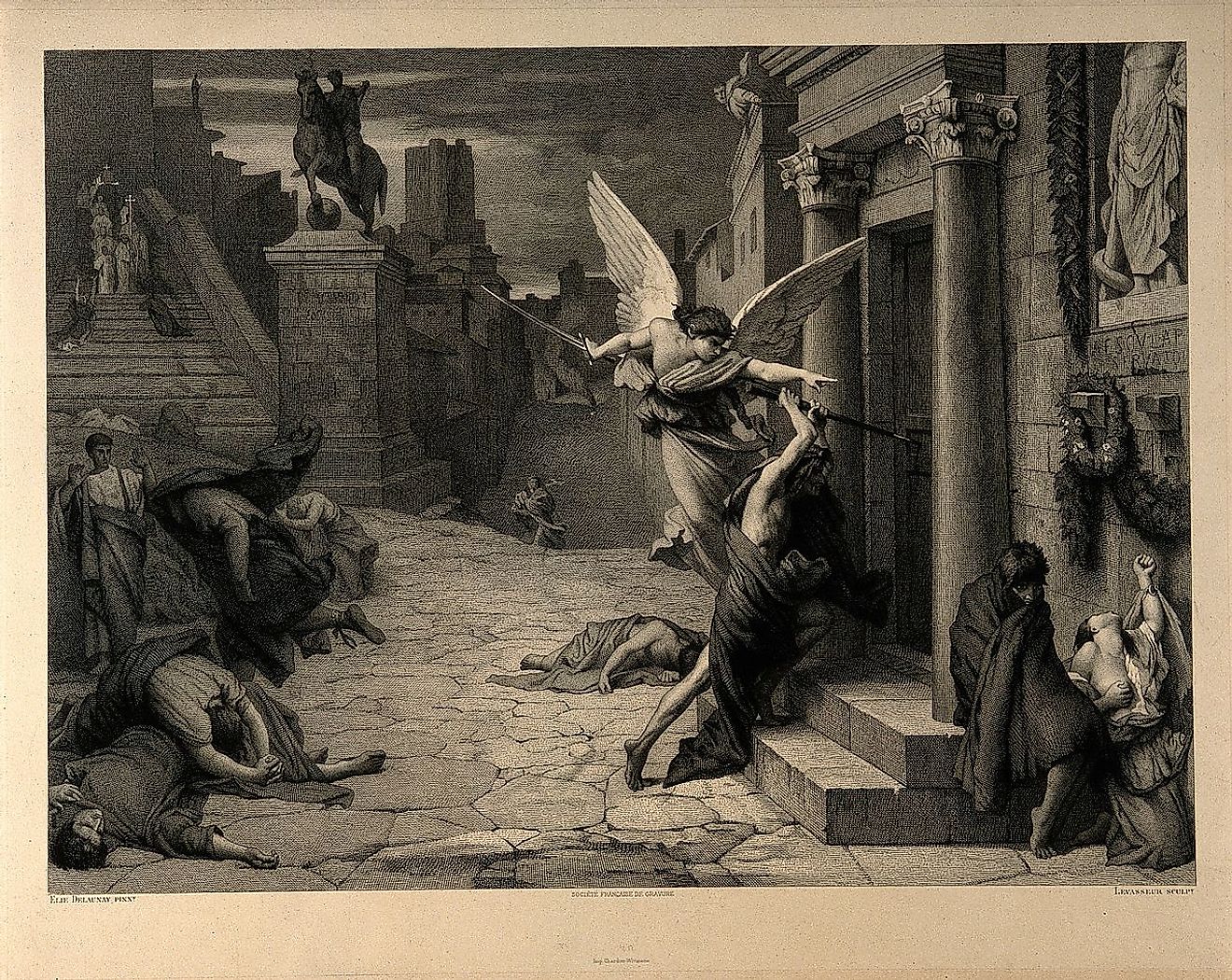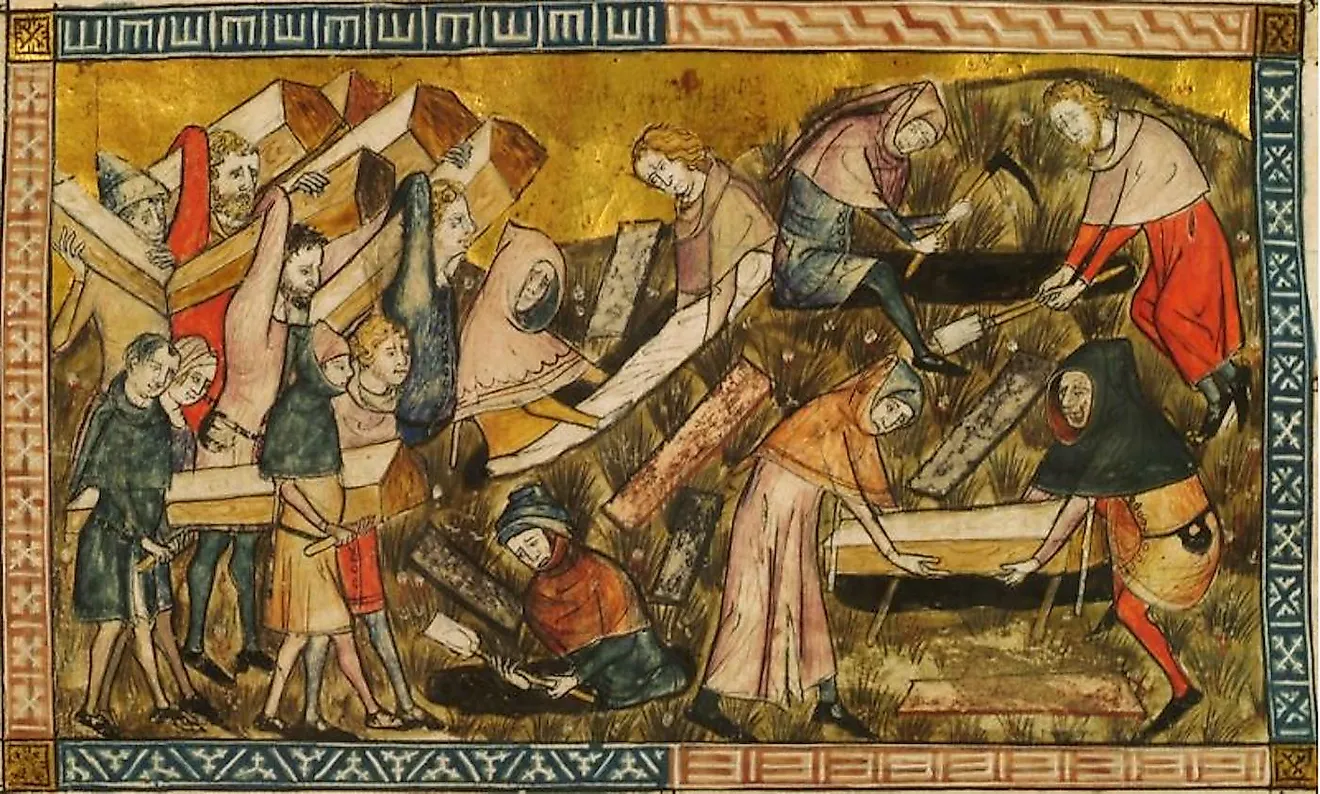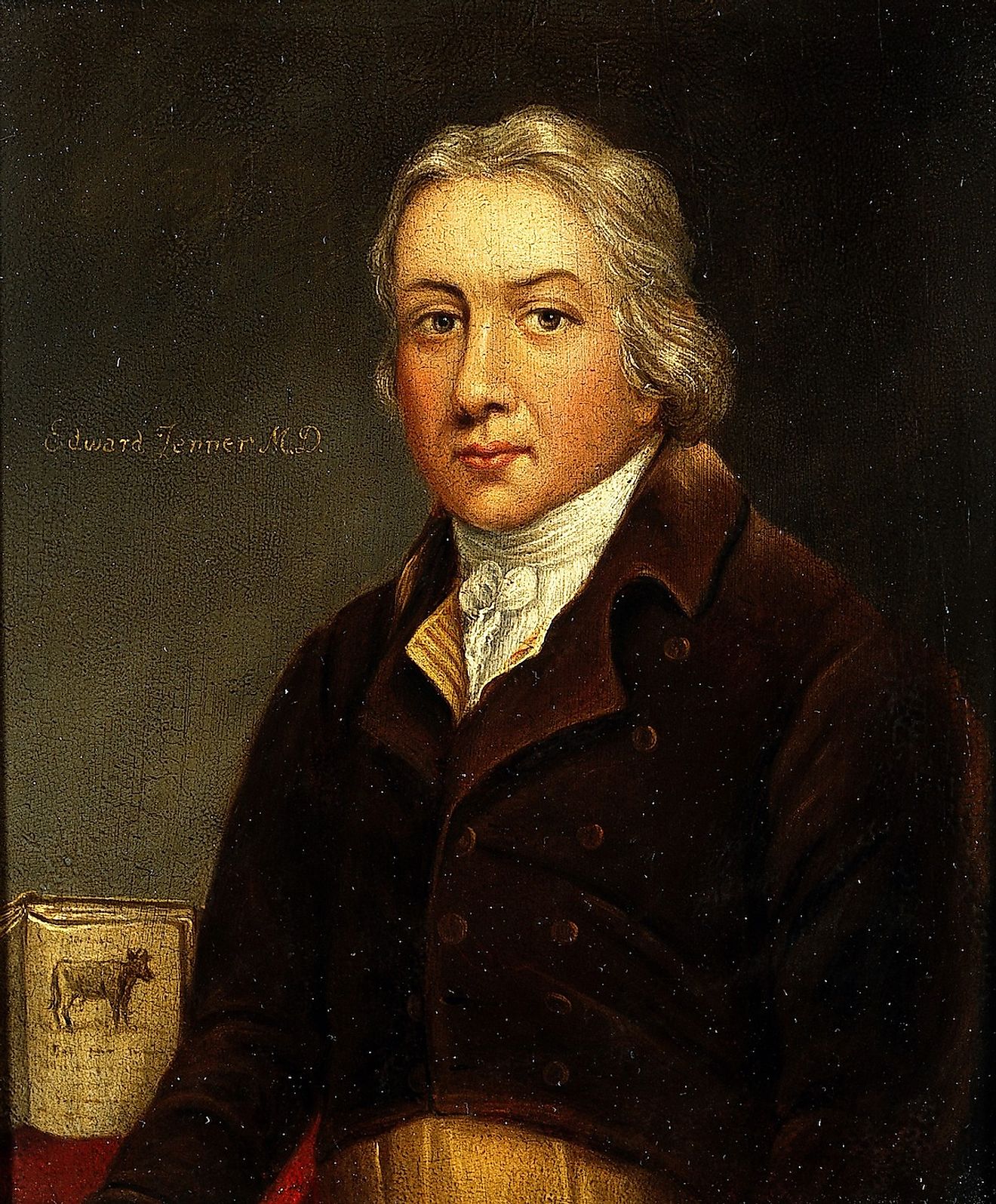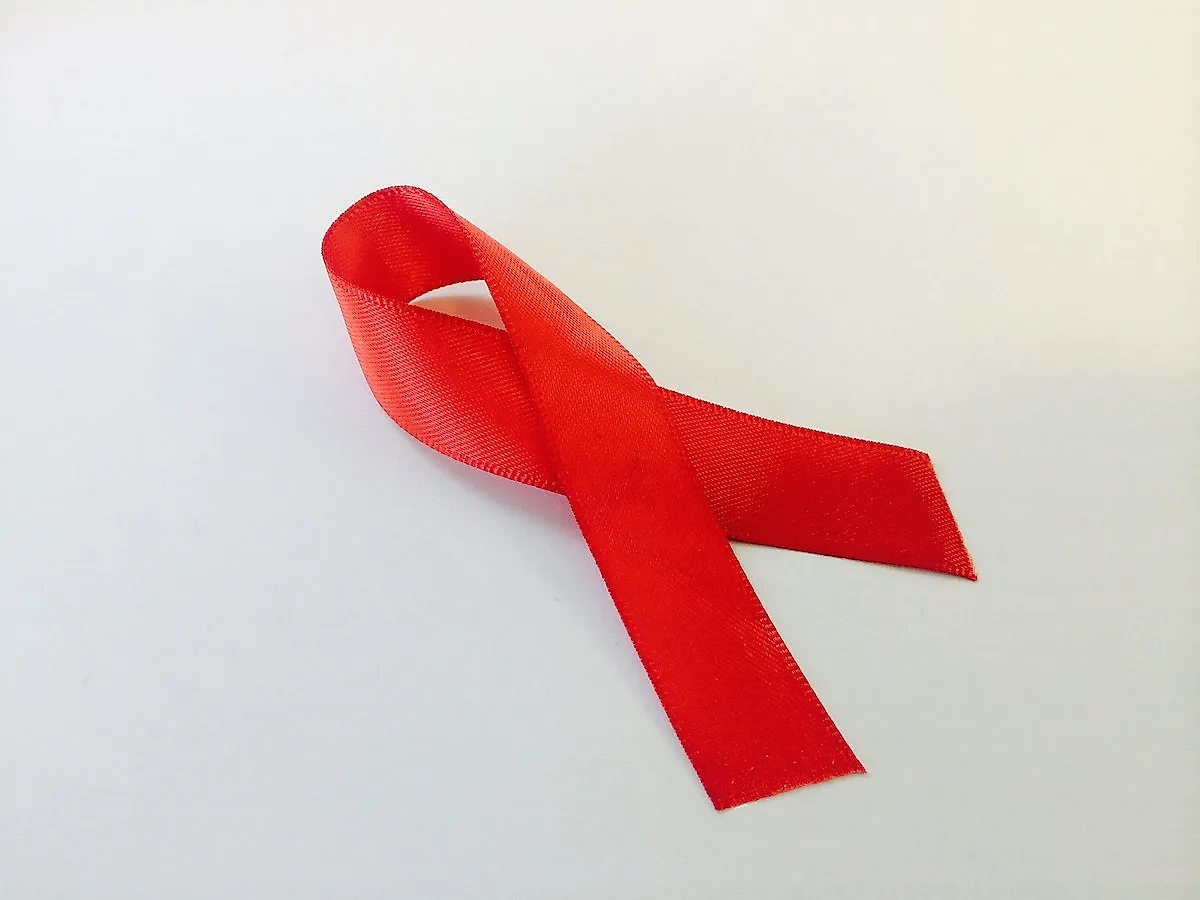10 pandemics through history
In this article we will describe 10 pandemics through history.
The coronavirus pandemic is not the first to hit human civilisation. Throughout history there have been numerous pandemics; some much worse than COVID-19, that claimed the lives of millions of people.
In fact, ever since humans learned to live in groups forming communities where they live close to each other and travel across the seas, the world has seen numerous diseases spread like wildfire. The following 10 pandemics are included either due to their impact, or their importance in the history of pandemics and infectious disease.
1. Antonine Plague (165 -180 AD)

2. The Black Death (1346-1353)

Citizens of Tournai bury plague victims
It was the deadly pandemic that swept through Europe and Asia among other continents and killed an estimated 75–200 million people in Europe. Aside from having fever and chills, those afflicted also had blood and pus seeping out of swellings all over the body.
3. Europe Smallpox Pandemic (1870-1875)

Edward Jenner, made important contributions in the development of the smallpox vaccine that helped save millions of lives
Before the world completely rid itself of this horrendous disease (in 1980), it had swept through continents killing three out of ten victims, for centuries. Those who survived were left with deep scars which were even found in 3000-year-old mummies, showing that it ravaged ancient civilisations for thousands of years.
In 1870 during the Franco-Prussian war smallpox spread throughout the world again. From Europe, it reached Asia through America causing 500,000 deaths worldwide. Previous smallpox epidemics killed many more, e.g. Mexican smallpox epidemic (1519-20) which led to 5-8 million deaths.
4. 1846-1860: The Third Cholera Pandemic

Cholera patient being treated by oral rehydration therapy in 1992
The first of seven cholera pandemics emerged in India in 1817. Three years after it spread throughout India it reached different countries in Asia. In 1821 it was brought by British troops traveling from India even to countries outside Asia. Cholera is caused by the Vibrio cholerae bacterium.
The third cholera pandemic (1846–1860) was the third major outbreak of cholera originating in India in the 19th century that reached far beyond its borders. In the Russian Empire, more than one million people died of cholera. It caused over 1 million deaths. In 1853-1854, the epidemic in London claimed over 10,000 lives, and there were 23,000 deaths in all of the UK.
5. Russian Flu (1889-1890)
![The 12 January 1890, edition of the Paris satirical magazine Le Grelot [fr] depicted an unfortunate influenza sufferer bowled along by a parade of doctors, druggists, skeleton musicians and dancing girls representing quinine and antipyrine](https://www.worldatlas.com/r/w1200/upload/11/fe/9a/everyone-has-influenza-the-round-of-doctors-and-druggists.jpg)
The 12 January 1890, edition of the Paris satirical magazine Le Grelot [fr] depicted an unfortunate influenza sufferer bowled along by a parade of doctors, druggists, skeleton musicians and dancing girls representing quinine and antipyrine
Called the first-ever modern flu pandemic, the Russian flu which started in St. Petersburg, spread through Europe infecting even prominent world leaders. After a few months, it reached virtually every part of the planet. An estimated 1 million people died of the Russian flu.
6. Spanish Flu (1918-1920)

American Expeditionary Force victims of the Spanish flu at U.S. Army Camp Hospital no. 45 in Aix-les-Bains, France, in 1918
The Spanish Flu of 1918 is considered the deadliest in history, infecting 1/3 of the world’s population and killing 20 to 50 million people worldwide. It came in three waves. The first wave was almost like the common flu and hit in the spring of 1918. The second wave that appeared in the fall of the same year was deadlier. It killed people within hours or a few days after the onset of symptoms. The third wave that came the following year was just as deadly and added more to the death toll.
7. Hong Kong Flu (1968)

The 1968 flu pandemic was caused by the influenza H3N2 virus. Although relatively not as deadly, the virus was highly contagious that it spread throughout Southeast Asia within two weeks after it first emerged in Hong Kong in July 1968. By December the virus has reached The United States, United Kingdom, and other countries in Europe. It killed an estimated one million people.
8. HIV/AIDS (1981)

AIDS Awareness label
The first case of acquired immunodeficiency syndrome (AIDS) was reported in 1981. Since then HIV (Human Immunodeficiency Virus) has spread globally infecting millions worldwide. There is still no known cure for this sexually transmitted disease but there are many effective treatments that keep the virus under control allowing people to live nearly normal lives.
9. SARS (2002-2004)
Severe Acute Respiratory Syndrome (SARS) was first reported in Guangdong, China in February 2003 although experts believe it started in China as early as November 2002. After a few months, it spread throughout countries in North America, South America, Europe, and Asia. It infected 8,098 people worldwide and killed 774 people. The disease caused high fever, body aches, and dry cough which then led to pneumonia in some cases. It was a warning to the world for what was to come in 2020 (COVID-19), as they are similar viruses.
10. COVID-19 Pandemic (2020+)

COVID-19 – caused by SARS coronavirus 2 (SARS-CoV-2) – is believed to have originated in Wuhan in China, the virus spread throughout Europe, the rest of Asia, North America and virtually every part of the world within months since it emerged in late 2019.
Summary
We have described 10 major pandemics through history. We hope you have found it interesting.

